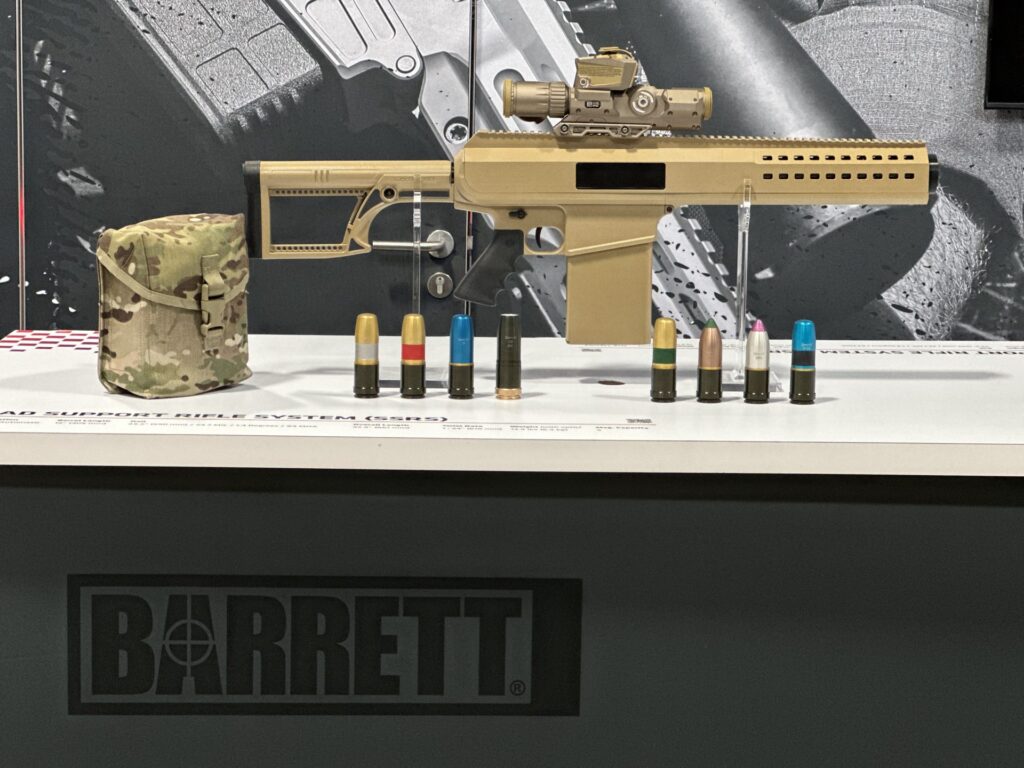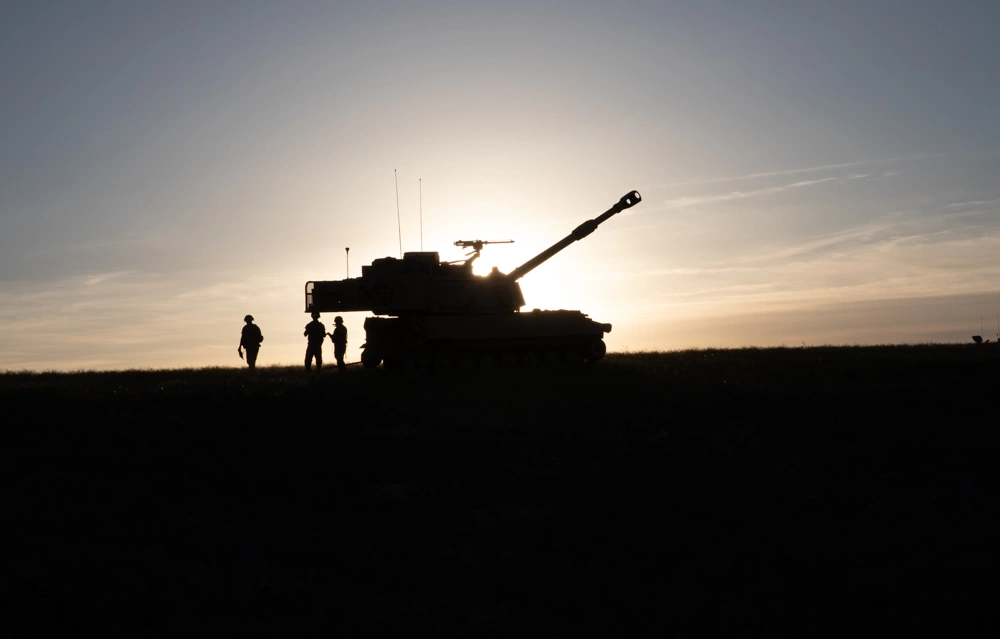The M855A1 – Is America’s new round a revolution in ballistics?
- By Travis Pike
Share This Article

It would take a massive improvement in ballistics to ever convince the American military to swap from the 5.56. Plenty of intermediate rounds offer advantages over the standard 5.56 round, but the advantages aren’t significant enough to warrant the logistical nightmare that is a caliber swap. However, changing up the 5.56 isn’t that difficult and can be done relatively easily with minimal disruption in logistics. It happened before when the Army moved from M193 to M855, and now to M855A1.
The M855A1 has been the subject of plenty of gnashing of teeth and is both loathed and loved. Today we are going to take an unbiased look at the M855A1 and discuss why the Army and Marine Corps moved to the new round and explore its benefits as well as its downsides.
Breaking down the M855A1
The M885A1 utilizes a 62-grain projectile, much like the M855. It is slightly longer than the M855 due to its construction. The Army completely eliminated lead from the equation. The use of a copper jacket combined with a copper plug maintained the weight of the M855A1 round and offered better penetration.

Additionally, the round’s elimination of lead allows the projectile to be green-friendly and doesn’t pollute the Army’s training areas. The copper cup sits at the bottom of the round; it is a reverse-drawn copper alloy jacket, which is the opposite of the M855. The steel slug is heavier and exposed versus the copper jacket that encloses the steel slug on the M855 round.
Beyond the projectile, the M855A1 is optimized for the shorter barrel of the M4. The M855 was optimized for the longer-barreled M16 series rifle. The M855A1 uses a faster burning powder that creates more pressure and amps up velocity. This higher velocity results in more effective penetration and down-range performance.
Related: This is why the M855A1 replaced the M855
Is it armor-piercing?
Armor-piercing is a loaded term that’s tough to define without defining the armor. The Army and military, in general, have a set definition of armor-piercing. According to the military’s definition, the M855A1 is not an armor-piercing round. Instead, the famed blacktip M993 is the Army’s 5.56 caliber armor-piercing round. The M855A1 will pierce through soft armor and subpar armor plates but doesn’t zip through modern armor.

The M855A1 uses a steel penetrator that does well against hard barriers and even mild steel plates. In fact, it performs substantially better than the original M855 when it comes to barrier penetration. With that said, it’s still not considered armor-piercing.
Related: War elephants: The original heavy armor fought into the 1950s
The M855A1 versus the M855
The M855A1 does a fantastic job of piercing through hard barriers. When it zips through wood, glass, car steel, and similar mediums, the projectile maintains great ballistic potential. It can pierce a ⅜ inch mild steel plate out to 160 yards. Beyond that, the round yaws like the standard M855, and when yawing, the round increases its terminal effectiveness.
The difference in yawing translates to more consistent performance regardless of the angle. When the standard M855 approaches via a high angle of yaw, the performance is brilliant and effective. When the M855 strikes at a low angle of yaw, the round performs inconsistently. However, the M855A1 performs regardless of the angle of yaw.
As such, the M855A1 isn’t yaw-dependent. It even outperforms the 7.62 M80 round in that regard: The 7.62 might be bigger and heavier, but the M80 is yaw-dependent, much like the M855.
The M855A1 doesn’t offer more range than the M855 but is more effective at longer ranges. Both the M855 and M855A1 rounds maintain the same trajectory, but along that trajectory, the M855A1 performs with great efficiency along that trajectory.
All this, without any weight increase to the individual soldier.
The downsides
Not even advanced ammo design gives us a free lunch and the M855A1 does have some downsides. First, to obtain M16 performance in an M4, the manufacturer had to use a faster burning powder that accelerates the velocity of the round. In doing so, pressure increases. The M855 has an average PSI of 51,500. The M855A1 increases that pressure to over 61,000 PSI. This results in increased wear on firearms, including on their the bolt and barrel.

The exposed steel penetrator and harder nature of the round were also shown to wear down the barrel extensions of M4 rifles. The round didn’t fully clear the ramps of the M4 and would be driven into the feed ramps. To remedy this, a new magazine design was implemented that ensured the round sat higher in the magazine and fed into the weapon without damaging the barrel extension.
The future of 5.56 Projectiles
The benefits of the M855Aq are apparent. In the short term, the round will make the Soldier and Marine more lethal and better able to kill their enemies.
The long-term issues of durability are a major concern, however as Soldiers and Marines can’t afford a broken bolt in the middle of a firefight.
For the M855A1 to function long-term, the military will need to ensure both the M27 and M4 rifles can withstand the abuse the round throws at them.
Feature Image: Marines participate in Table One of their annual Rifle Marksmanship Qualification at Wilcox Range, April 20, 2016. Table One teaches the fundamentals of shooting by firing upon a target at the 200-, 300-, and 500-yard line utilizing a variety of shooting positions. (Photo by Cpl. Asia Sorenson/USMC)
Read more from Sandboxx News
Related Posts
Sandboxx News Merch
-

‘AirPower’ Classic Hoodie
$46.00 – $48.00 Select options This product has multiple variants. The options may be chosen on the product page -

‘Sandboxx News’ Trucker Cap
$27.00 Select options This product has multiple variants. The options may be chosen on the product page -

‘Kinetic Diplomacy’ Bumper Sticker (Black)
$8.00 Add to cart

Travis Pike
Travis Pike is a former Marine Machine gunner who served with 2nd Bn 2nd Marines for 5 years. He deployed in 2009 to Afghanistan and again in 2011 with the 22nd MEU(SOC) during a record-setting 11 months at sea. He’s trained with the Romanian Army, the Spanish Marines, the Emirate Marines, and the Afghan National Army. He serves as an NRA certified pistol instructor and teaches concealed carry classes.
Related to: Gear & Tech, Military Affairs

The Switchblade, loitering munitions, and the new terrifying face of warfare

5 ways to prepare and survive the Marine Corps boot camp

Barrett’s Squad Support Rifle System will make infantry squad deadlier

The unique world and uses of howitzers
Sandboxx News
-

‘Sandboxx News’ Trucker Cap
$27.00 Select options This product has multiple variants. The options may be chosen on the product page -

‘AirPower’ Classic Hoodie
$46.00 – $48.00 Select options This product has multiple variants. The options may be chosen on the product page -

‘AirPower’ Golf Rope Hat
$31.00 Select options This product has multiple variants. The options may be chosen on the product page -

‘Sandboxx News’ Dad Hat
$27.00 Select options This product has multiple variants. The options may be chosen on the product page
